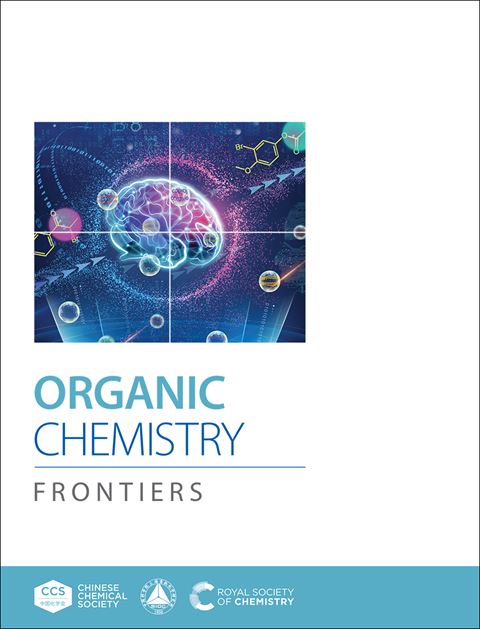Monodentate Halogen Bond Activation of Aziridines in Formal [3+2] Cycloadditions
IF 4.7
1区 化学
Q1 CHEMISTRY, ORGANIC
引用次数: 0
Abstract
The ring opening of aziridines to produce various N-heterocycles traditionally requires strong Lewis acids or transition metal catalysts, with non-covalent organocatalytic approaches remaining largely unexplored. Herein, we demonstrate that Nheterocyclic iodonium salts can effectively catalyze [3+2] cycloadditions of aziridines through a monodentate halogen bond (XB) activation. Using 1-5 mol% of the iodolium catalyst, a wide range of aziridines undergo an efficient cycloaddition with a variety of dipolarophiles (carbonyls, alkynes, and alkenes) to furnish oxazolidines, pyrrolines, and pyrrolidines. DFT calculations revealed a previously underexplored N-activation mode, with detailed non-covalent interaction analysis showing that the N-heterocyclic iodonium salt's exceptional performance stems from combined I-N and I-π interactions.正[3+2]环加成中氮杂环的单齿卤素键活化
传统上,叠氮嘧啶开环产生各种n-杂环需要强路易斯酸或过渡金属催化剂,非共价有机催化方法在很大程度上尚未开发。在这里,我们证明了非杂环碘盐可以通过单齿卤素键(XB)激活有效地催化氮嘧啶的[3+2]环加成。使用1-5摩尔%的碘催化剂,多种叠氮嘧啶与各种亲偶极试剂(羰基、炔和烯烃)进行有效的环加成反应,生成恶唑烷、吡咯啉和吡咯烷。DFT计算揭示了以前未被充分开发的n活化模式,详细的非共价相互作用分析表明,n-杂环碘盐的特殊性能源于I- n和I-π的联合相互作用。
本文章由计算机程序翻译,如有差异,请以英文原文为准。
求助全文
约1分钟内获得全文
求助全文
来源期刊

Organic Chemistry Frontiers
CHEMISTRY, ORGANIC-
CiteScore
7.90
自引率
11.10%
发文量
686
审稿时长
1 months
期刊介绍:
Organic Chemistry Frontiers is an esteemed journal that publishes high-quality research across the field of organic chemistry. It places a significant emphasis on studies that contribute substantially to the field by introducing new or significantly improved protocols and methodologies. The journal covers a wide array of topics which include, but are not limited to, organic synthesis, the development of synthetic methodologies, catalysis, natural products, functional organic materials, supramolecular and macromolecular chemistry, as well as physical and computational organic chemistry.
 求助内容:
求助内容: 应助结果提醒方式:
应助结果提醒方式:


